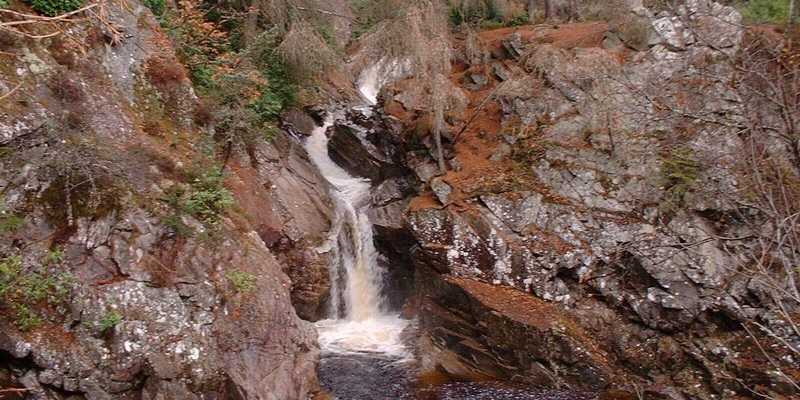New rules could soon be introduced to license canyoning guides after two women suffered spinal injuries while taking part in the sport in Highland Perthshire.
In canyoning, people make their way down a gorge or river by walking, swimming, scrambling or jumping.
First introduced to the UK around 15 years ago, the rough and tumble sport has become increasingly popular.
But over the past six months two people have suffered spinal injuries while canyoning at the Falls of Bruar at Blair Atholl.
A 24-year-old woman suffered serious back injuries after falling 25 feet in a gully in June. Less than two weeks ago a 49-year-old woman was airlifted to Ninewells Hospital in Dundee after falling 30 feet at the same place.
It is understood she injured her back after jumping from a rock into a gorge pool.
Now the owner of Ballinuig-based outdoor adventure company Nae Limits which has not been involved in any of the recent canyoning incidents has said he believes guides will soon have to earn proper accreditation from a qualifying body.
Although the sport does not yet have a governing body, steps are being taken to create an official qualification for canyoning guides, which would ensure each instructor has been trained to a certain level.
”We pitch canyoning as something for every age group to access, providing they are in fair health, water confident and not scared of heights,” said John Mason-Strang.
”There are three levels and we make sure that people go on the first level so we can see them and their abilities. Nobody is ever presented with an obstacle they cannot opt out from.”
Mr Mason-Strang said he is confident in Nae Limit’s safety procedures but warned other companies could be run to different standards.
He said: ”We don’t need to tighten up our risk assessment we offer staff training and qualifications. The problem comes because not every business operator or person can view the health safety rules differently.
”Unfortunately, we are in a position where the Government can’t police it. It is very difficult to police outdoor activities.
”It is only when accidents occur that shortfalls are recognised, that is the unfortunate things about health and safety in any industry.”
He added that the Fort William-based UK Canyon Guides is likely to soon offer an accredited training course for canyoning guides.
”There are no bodies that give a particular credit but they are in the process of working towards that for canyoning,” he said.
”UK Canyon Guides are our technical advisors and we train all our staff with them. However, there is no legal requirement for a qualification.”
Ben Starkie, from UK Canyon Guides, told The Courier: ”We are basically seeking to become the national governing body. We have just formalised the association so things are moving along.
”There will be two levels of qualification level one for gorge walking and level two would be for professional canyoning guides. It is something we have been working towards for the past couple of years.”
A spokeswoman for the Royal Society for the Prevention of Accidents said sports like canyoning cannot be made completely risk free but should be ”as safe as necessary, rather than as safe as possible”.
But she added RoSPA would expect guides to hold qualifications to related disciplines like mountaineering and canoeing and that any operator offering canyoning to people under the age of 18 must be accredited by the Adventure Activities Licensing Authority.
